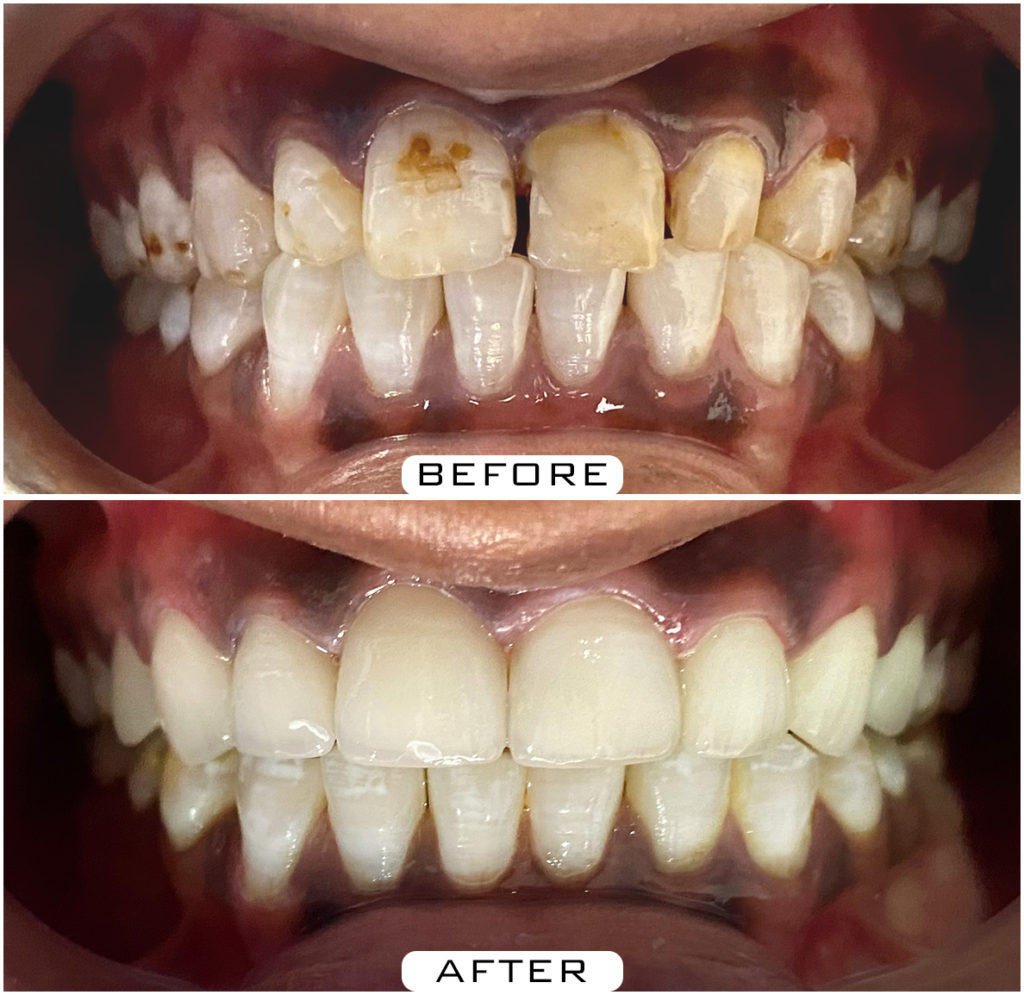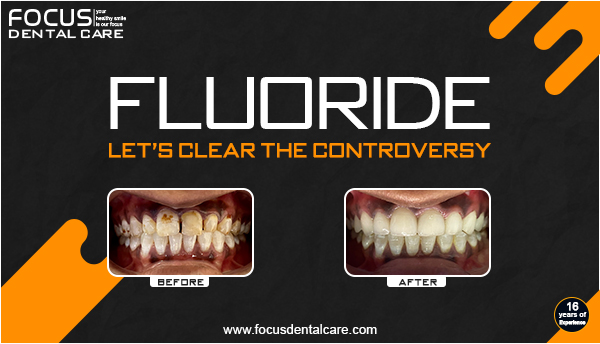Have you seen children with stained teeth and wondered how they could get tobacco-like stains at a young age? That is because of excess Fluoride consumption which causes Fluorosis.
Do you know why toothpaste is added with fluoride, whereas we hear of a disease called fluorosis in India caused by high fluoride intake?
Fluoride is used in dentistry as an anti-cariogenic agent or anti-cavity agent. But excess consumption causes “fluorosis” of teeth, especially in children whose teeth are under gums and are not fully formed.
Read on to learn more about the controversy surrounding fluoride, its advantages, and its side effects.
How does fluoride protect the teeth?
Fluoride makes the enamel (outer surface of teeth) stronger, resistant to acid attacks, and prevents tooth decay.
When bacteria in your mouth break down sugar and carbs, they produce acids that eat away the minerals in your tooth enamel. This loss of minerals is called demineralization. Weakened tooth enamel leaves your teeth vulnerable to bacteria that cause cavities.
It helps to remineralize your tooth enamel, which can prevent cavities and reverse early signs of tooth decay.
Sources of fluoride:
Water: It has been added to public water supplies to bring the levels up to the amount necessary to help prevent tooth decay, this is called Community water fluoridation. The desirable limit of fluoride as per the Bureau of Indian Standards (BIS) is 1ppm.
- Soil
- Food
- Beverages
- Toothpaste
- Mouth rinses
Benefits of Fluoride intake:
- Intake from food, water, and dietary supplements makes tooth enamel stronger, making it easier to resist tooth decay. This provides systemic benefit.
- The use of fluoridated toothpaste and mouthwashes makes the fluoride act on the surface of your teeth and provides topical benefit. Topical fluoride helps rebuild (remineralize) weakened tooth enamel and reverses early signs of tooth decay.
Topical Fluoridation:
If your dentist finds that your teeth are more prone to cavities, they may advise you to go for a Topical Fluoride application.
What are the potential side effects of fluoride?
Dental Fluorosis:
- Continuous exposure to high concentrations of fluoride during tooth development causes Dental fluorosis, leading to enamel with low mineral content and increased porosity.
- The critical period for risk of dental fluorosis is between 1 and 7 years of age. After the age of 8 when permanent teeth have been established, there is a lesser risk of dental fluorosis.
- Children are also more likely to swallow toothpaste, which contains significantly more fluoride, which results in dental fluorosis.
What are the symptoms of Dental Fluorosis?
- Cloudy white spots, lines on teeth
- Teeth with a chalky appearance
- Yellow or brown discoloration/stains
- Surface irregularities
- Visible pits in tooth enamel
How to prevent Dental Fluorosis?
- You can reduce the risk of developing dental fluorosis in your child by supervising them when they brush their teeth by making sure they aren’t swallowing toothpaste. You will also need to encourage your child to spit out the toothpaste after brushing and discourage swallowing it.
- Avoid fluoridated mouthwash in children under the age of 6. This is because young children under the age of 6 don’t fully develop the swallowing reflex and are more likely to swallow large amounts of mouthwash.
- Monitor the levels of fluoride in your drinking water. The maximum fluoride level approved by the World Health Organization is 1.5 mg/dl.
Treatment of Dental Fluorosis
- Teeth Whitening-for mild flouride-related stains: At Focus Dental Care we use Philips Zoom for Teeth Whitening with which teeth can be whitened in less than 30 minutes.
- Composite bonding: Composite tooth bonding involves the application of a tooth-colored composite resin directly to the tooth surface and then hardening it with a UV light to ensure a strong bond to the tooth. Dental bonding is a safe, simple, and affordable way to correct Fluorosis stains and restore the radiance of your smile.
- Dental Laminates: Laminates are commonly used to treat Fluorosis. Laminates are thin wafer-like shells that are permanently cemented onto the teeth, they completely solve the fluorosis stains while addressing the size, shape structure of teeth.
- Dental Crowns- Dental crowns are used in cases with severe fluorosis and malformed teeth. The tooth is reduced all-around to place an aesthetic crown upon it.

At Focus Dental Care we use CEREC CAD-CAM with which we can make Laminates and crowns in one hour!
If you are not sure which of the above treatment options suits you, we would love to help you. Book an appointment now.


